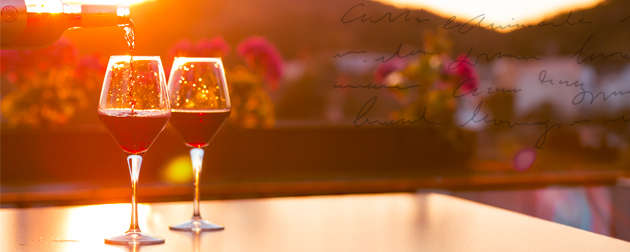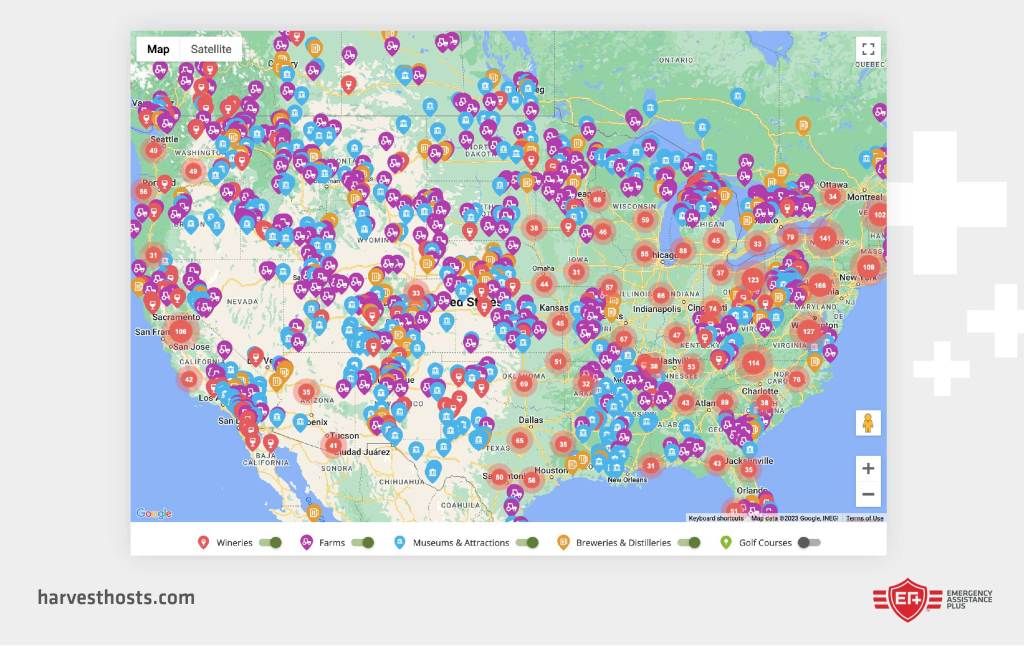Plan your summer winery camping trip with these tips.
Published on July 13th, 2023 in Destinations, Road Trip
We’ve all heard of glamping, but how much do you know about the recent trend of winery camping?
RV trips are one of the ultimate expressions of American freedom … Hop in your vehicle, travel to your desired destination, park and sleep overnight in the comfort of your RV.
Where you choose to park is up to you! It could be an RV park, a campground, a Walmart parking lot, or even a winery.
And in recent years, camping at wineries has really taken off.
In this post we’ll take a look at the (recent) history of winery camping, discuss what to expect, and offer some tips for helping you find suitable locations.
Let’s get started!
What is winery camping?
Winery camping, also called vineyard camping or wine country camping, is a form of camping where individuals or groups set up tents, RVs, or campers in or near a winery or vineyard. It combines elements of outdoor and RV camping with the agritourism experience of being in close proximity to a functional winery or vineyard.
Generally, winery camping consists of two parts:
Depending on which winery you choose to camp at, the second part is optional, but we’ll get to what you can expect later in this post.
That said, who could say no to a wine flight and a tour of a vineyard?

Camping at wineries has been around for a while, but it’s really taken off in the last five years for a couple of reasons.
Many winery owners recognized the potential to attract visitors who appreciate both outdoor camping and wine-related activities. Offering an on-premise campsite fulfills this need and adds an additional revenue stream for their business. Wine tourism has gained popularity nationally, and wineries have responded by diversifying their offerings to cater to those seeking unique experiences.
In 2018, retired tech entrepreneur and RV enthusiast Joel Holland bought a company called Harvest Hosts founded in 2010. Harvest Hosts is a membership program that has a network of wineries, farms, breweries, museums and other unique attractions that invite self-contained RVers to visit and stay overnight. In a short time, he grew their locations from 600 to more than 4,700, gaining national exposure along the way.
Travelers now have many options beyond hotels and other traditional accommodations. Many people have expectations and desires for more unique experiences. Booking a group bus tour with other wine enthusiasts is fine; however, creating your own custom tour and enjoying a private sunrise while overlooking a vineyard is even better.
Now let’s talk about the actual experience and accommodations you might find while camping at wineries.
What to expect when camping at a winery
The camping experience varies depending on the winery’s facilities and amenities. Some wineries provide dedicated camping grounds with designated spots for tents or RV’s, while others allow you to set up camp in an area of their vineyard. Amenities can range from basic facilities like restrooms to more luxurious options such as on-site restaurants, swimming pools, or entertainment areas.
In general, however, there are some common things you can expect while camping at a winery.
One-night stay
Opposed to a campground or RV park, most wineries (including the network of Harvest Hosts) only offer a 24-hour stay. While you may be able to make other arrangements, in general, the idea is to only stay for one night.
This is largely because the idea of camping at the winery is connected to the winery experience—it’s not just a home base for other ‘hub-and-spoke’ adventures.
Dry camping
These are wineries first, campgrounds second—they were not originally developed for RVs. While some sites may offer electricity and water, do not expect full RV hookups and concrete pads.
It’s best to prepare for dry camping, meaning do not expect to have access to electricity, fresh water, or sewer hookups during your stay.

Patronage
Some wineries charge for camping while others offer it for free. With Harvest Hosts, for example, there is no fee for staying at the site, but there is an expectation for you to patronize the winery by booking tours and potentially buying a case or half-case of wine.
Scenic surroundings
If the environment you’re camping in is important to you, wineries are a great option. Vineyards are typically situated in rolling hills with handsome buildings and support structures on site. Many will have manicured gardens and picnic areas designed to provide a high-quality outdoor experience in the spring and summer.
Wine-related activities
While your experience will vary depending on the individual winery and the season, you might find wine-related activities available during your stay. These activities can include:
These activities can help you create incredible memories through hands-on and immersive experiences in the world of winemaking. Be sure to inquire about these activities and book in advance!
Winery camping locations
If you’ve read this far, you might be thinking:
This sounds great! Where can I go winery camping?
As we mentioned earlier, more and more wineries are offering camping at their properties, and you have tons of options across the country. To get a sense of the scale, check out this map from Harvest Hosts of more than 4,500 wineries in their network:

From California to Vermont, you can find winery camping almost anywhere you look! Here are your options for finding a great spot:
Use a membership site
Harvest Hosts is an example of a reputable company with lots of experience in winery camping. They charge a fee for their membership, but their hosts don’t (although patronage is strongly encouraged). There are other services similar to Harvest Hosts including Boondockers Welcome where you might be able to find a great campsite.
Search Google
Not exactly a revolutionary concept, but effective nonetheless!
If you know the town or region you’ll be traveling to, simply search “[town name] + winery camping” and see what you can find.
Sometimes you’ll find a page dedicated to camping on the website of a winery, other times you might just find a news article in a local paper and you’ll need to call the property.
Call wineries directly
If you’re familiar with the area or are an experienced RVer, consider just calling the winery directly and making an offer. Your mileage may vary, but it never hurts to ask!
Bonus tip for RV trips to wineries
The idea behind winery camping, and all RV trips for that matter, is to create fun and memorable experiences. There’s a risk for things to go wrong anytime you travel and if you’re caught unprepared, you might create a memory that you dread.
Travel assistance offers services that can help if you have a medical emergency while traveling.
For example, if you’re on an RV trip and something happens that prevents you from driving your vehicle home because your documented medical emergency prohibits it—and your companion is unable to drive—Emergency Assistance Plus will make sure your vehicle is returned home safely and securely.
But that’s only one example of travel assistance services from EA+! For our full list of plans and pricing, please feel free to check out our website or call us at 1-866-863-4460.

Should a medical emergency derail your travel, Emergency Assistance Plus® (EA+®) has you protected no matter where you are.
Learn MoreRelated resources

Destinations
Your comprehensive guide to exploring Europe's rivers through immersive and scenic river cruises.
Continue Reading
Destinations
Discover ten thrilling adventures for couples, from skiing in Aspen to surfing in Hawaii.
Continue Reading